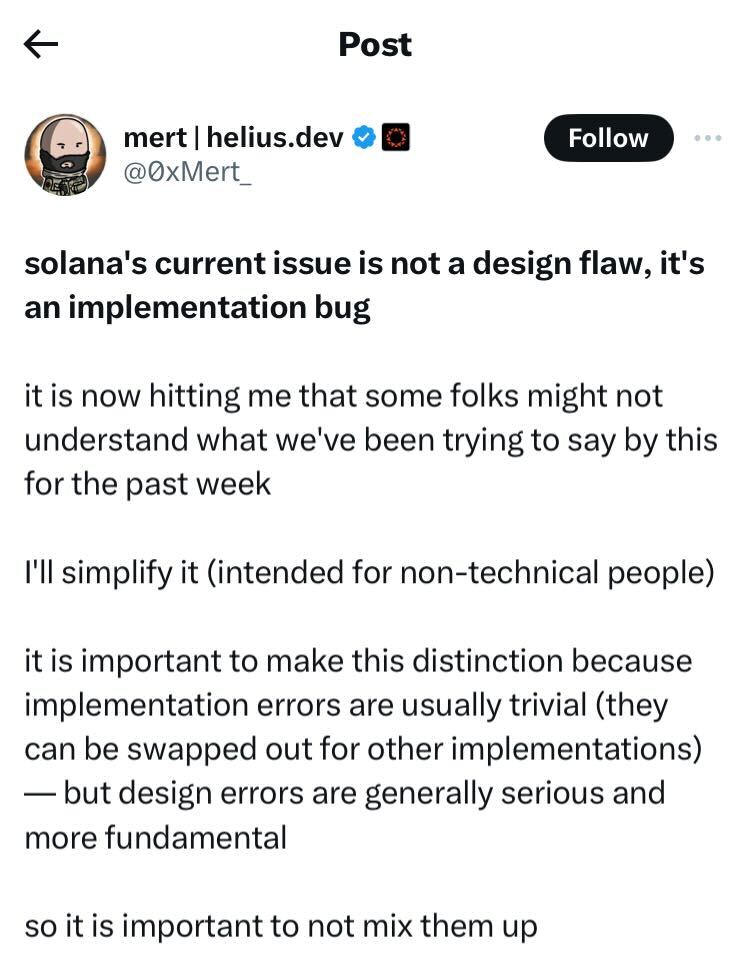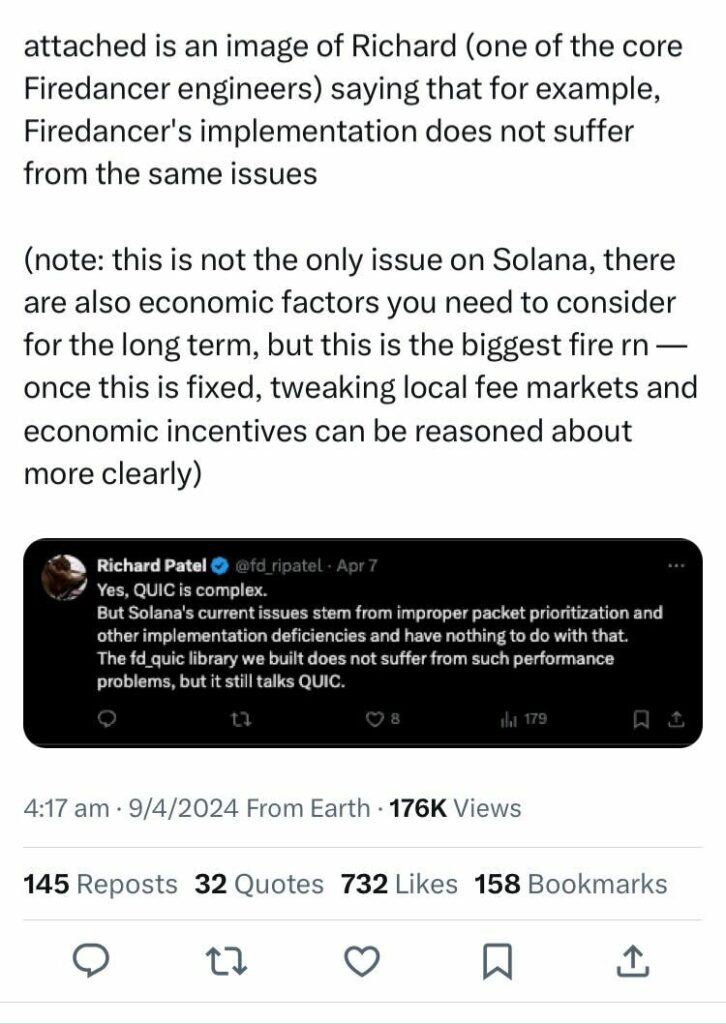
YEREVAN (CoinChapter.com) — Solana’s development team is setting their sights on April 15 to roll out a solution for what they’re calling an “implementation bug.” This glitch recently sent the rate of failed transactions on the Solana network soaring. They’re tackling the issue head-on, aiming to get things back to smooth sailing soon.
Is Solana’s Bug a Design Misstep? Mert Mumtaz Decodes the Issue
Mert Mumtaz, CEO of Helius Labs, emphatically clarified, “The problem Solana is facing? It’s not a design flaw. Instead, it’s an implementation bug.” Helius Labs specializes in blockchain infrastructure, offering dedicated back-end support to the Solana network. Mumtaz’s statement highlights a crucial distinction, underlining their commitment to addressing the issue.
Mert Mumtaz took to X, engaging his 108,000 followers on April 8, to shed light on the issue. “Drawing a line between implementation and design errors is crucial,” he emphasized. “Implementation glitches are often minor and fixable,” he continued, “but design flaws? They’re deeper, more serious problems.” His explanation aims to clarify the nature of Solana’s current challenge, offering reassurance about its manageability.

Solana’s Transaction Troubles: Not a Systemic Flaw, Says CEO Mert Mumtaz
On April 4, amidst the recent surge in memecoin activity on the network, data revealed a startling 75% failure rate for non-vote transactions on Solana. This high percentage has since decreased to 64.8%.
Mumtaz pointed out that the core of the issue lies in the Solana developers’ implementation of “QUIC,” a data transfer protocol developed by Google. This protocol is designed to keep all nodes updated on the network’s current state.
He emphasizes that this implementation hiccup shouldn’t be mistaken for a flaw in the overall design. He draws on an analogy with car design to make his point clear, suggesting that while a specific part might malfunction, it doesn’t necessarily mean the whole car was poorly designed.
Mumtaz explains that while all cars share basic features like four tires and an engine, “there are many implementations of the car design,” citing BMW, Mercedes, Toyota, F1, and Tesla as examples of different takes on the fundamental car concept.
Mert draws a parallel: If a single BMW model has poor steering, “we don’t say all cars are flawed.” Rather, we recognize that this specific model has an issue that needs to be addressed and fixed.
Solana’s Struggle
Likewise, Mumtaz notes that Solana’s current implementation of QUIC has its own set of bugs and deficiencies that need to be ironed out.
“However, that doesn’t mean ‘Solana’ has a design flaw — it means it chose a buggy implementation for this part of its design.”

Mumtaz pointed out that the fix is scheduled for April 15. This is assuming everything goes smoothly with the tests—no new issues crop up. They plan to follow up with a more advanced solution later on.
The network failures on Solana have raised alarms within the community, especially since the SOL token has a hefty market cap of $79.9 billion. Moreover, there’s an extra $4.6 billion in value currently locked on the network, as reported by DefiLlama.


